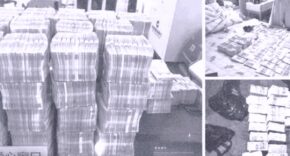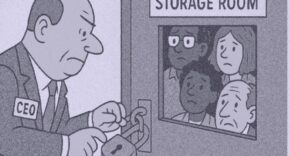Former Senator Phil Gramm has made a strong case that the United States has a poverty measurement problem, not a poverty crisis. According to Gramm, “the Census Bureau’s measures of household income and poverty… have for decades overstated the extent of poverty because [they don’t] count as income 88% of transfer payments made to households classified as poor.” In other words, the federal government defines poverty in a way that ignores most of the financial help it already provides to low-income Americans.
This approach has led to misleading poverty statistics that continue to justify enormous government spending. While it may appear that poverty in the U.S. has remained unchanged for decades, the reality is that far fewer people are actually living in true material deprivation. Understanding the difference between reported poverty and real poverty is essential to having an honest conversation about public welfare, economic justice, and federal spending.
The Official Poverty Measure
The United States government measures poverty using two main tools: the official poverty measure and the Supplemental Poverty Measure (SPM). The official measure, created in the 1960s, compares a household’s pre-tax cash income to a national poverty threshold. This threshold varies depending on family size and composition. In 2023, the official poverty rate stood at 11.1%, which translates to about 36.8 million Americans being classified as poor.
For example, the poverty guideline for a family of four in 2025 is $32,150. If a family earns less than this amount in pre-tax income, they are considered to be living in poverty. But this number doesn’t tell the full story.
The Census Bureau’s official measure does not count government aid such as food stamps (SNAP), housing subsidies, Medicaid, or refundable tax credits. As Gramm and John Early explained, “Inflation-adjusted government transfer payments to those being classified as poor are almost 20 times greater in real purchasing power than they were when the War on Poverty began.” Yet, because these resources are excluded from income calculations, the poverty rate appears to remain stuck around 11% year after year.
What the Supplemental Poverty Measure Adds
To address some of these flaws, the government introduced the Supplemental Poverty Measure in 2011. The SPM includes non-cash government benefits such as SNAP and housing assistance and adjusts for geographic differences in housing costs. It also takes taxes, medical expenses, and work-related costs into account. Still, even this improved measure does not capture the full picture. In 2023, the SPM showed a poverty rate of 12.9%, which was actually higher than the official rate.
In 2023, the Census reported that the SPM child poverty rate rose to 13.7%, and “Social Security continues to be the largest anti-poverty program, moving 27.6 million individuals out of SPM poverty.” However, this still does not reflect how radically government aid has transformed living conditions for the poorest Americans. Both measures fall short because they still underestimate the total value of aid provided.
A More Accurate View from the CBO
A better estimate comes from the Congressional Budget Office (CBO), which released a report in January 2023 that uses a more complete definition of income. The CBO counts more transfer payments than the Census and considers their effect on actual household resources. According to this more accurate measure, the poverty rate in 2021 was just 0.8%. This finding confirms what earlier independent studies had already shown: the number of Americans living in true poverty is very small.
Gramm and Early explain that “the Census has stonewalled the CBO finding and has not even acted on its own recent study showing that the official poverty count is five million too high.” In fact, they argue that because the government continues to use this flawed measure, “families defined as poor receive $257 billion more a year than is required to lift them out of poverty.”
What Is Not Counted as Income
One of the biggest flaws in the poverty measurement is that many types of government aid are simply ignored. These include:
- Medicaid: Free or low-cost health insurance that is not counted as income, even though it saves families thousands of dollars in medical bills.
- Supplemental Nutrition Assistance Program (SNAP): Monthly benefits to buy food, also not counted.
- Refundable tax credits like the Earned Income Tax Credit (EITC): These are cash payments to families that often exceed their tax liability, yet they are not included in income.
- Housing assistance, energy assistance, and free school meals.
- Over 100 other state, federal, and local programs that help low-income families meet basic needs.
As a result, the official poverty measure often shows that a household is poor, even if it receives tens of thousands of dollars in government aid. Gramm and Early point out that if all benefits were counted, the average income of the bottom fifth of households would be over $65,000, not the $17,650 currently reported.
Programs That Help the Non-Poor
Another problem is that these programs often serve people who are not actually poor. Gramm and Early explain that “$1.48 trillion in welfare payments a year go to families that weren’t poor before receiving welfare benefits.” Programs like Medicaid have expanded so much that in some states, families with incomes up to 319% of the poverty level (which is $102,559 for a family of four) can qualify.
Similarly, the IRS provides refundable tax credits without considering whether the recipient is already receiving other forms of aid. Food stamp eligibility is also expanded in some states. California allows people earning up to 200% of the poverty line to receive benefits. States often grant automatic food stamp eligibility to anyone receiving other welfare, regardless of income level.
Because these programs are based on income definitions that leave out other forms of assistance, many people qualify for multiple programs even if their total resources would place them well above the poverty line.
Real Poverty Is Not Comparable to Global Poverty
When comparing poverty in the U.S. to that in other countries, it’s important to realize that American poverty is not the same as poverty elsewhere. In many parts of the world, poverty means no food, no shelter, and no access to clean water. In the U.S., people classified as poor may have access to healthcare, housing assistance, food programs, and cash payments.
Gramm and Early argue that “the poverty measure today isn’t consistent with [the original] definition because it fails to count the more than $2 trillion in government benefits that are given to low-income households to meet their needs.” In other words, by any honest measure, the number of Americans living in true, material deprivation is very small.
The federal deficit is now 6.4% of gross domestic product, and the national debt has reached 122% of GDP. With this level of borrowing, the cost of overpaying welfare to people who are not truly poor becomes a serious financial threat.
Gramm and Early recommend three major reforms:
- Count all government transfer payments as income when measuring poverty.
- Tie welfare eligibility to accurate, complete income data, including all forms of aid.
- Implement work requirements for those who can work.
These changes could reduce fraud, waste, and abuse while still protecting the small number of Americans in real need.
The U.S. does not have a widespread poverty problem—it has a measurement problem. By continuing to rely on flawed income definitions, the Census Bureau gives a distorted picture of who is poor and how much help they need. As a result, the government spends hundreds of billions of dollars more than necessary.
A more accurate system would not only save money but also restore public confidence in social programs. Most importantly, it would ensure that help is focused on those who truly cannot meet their basic needs. If we want to solve real poverty, we must first start by measuring it honestly.











